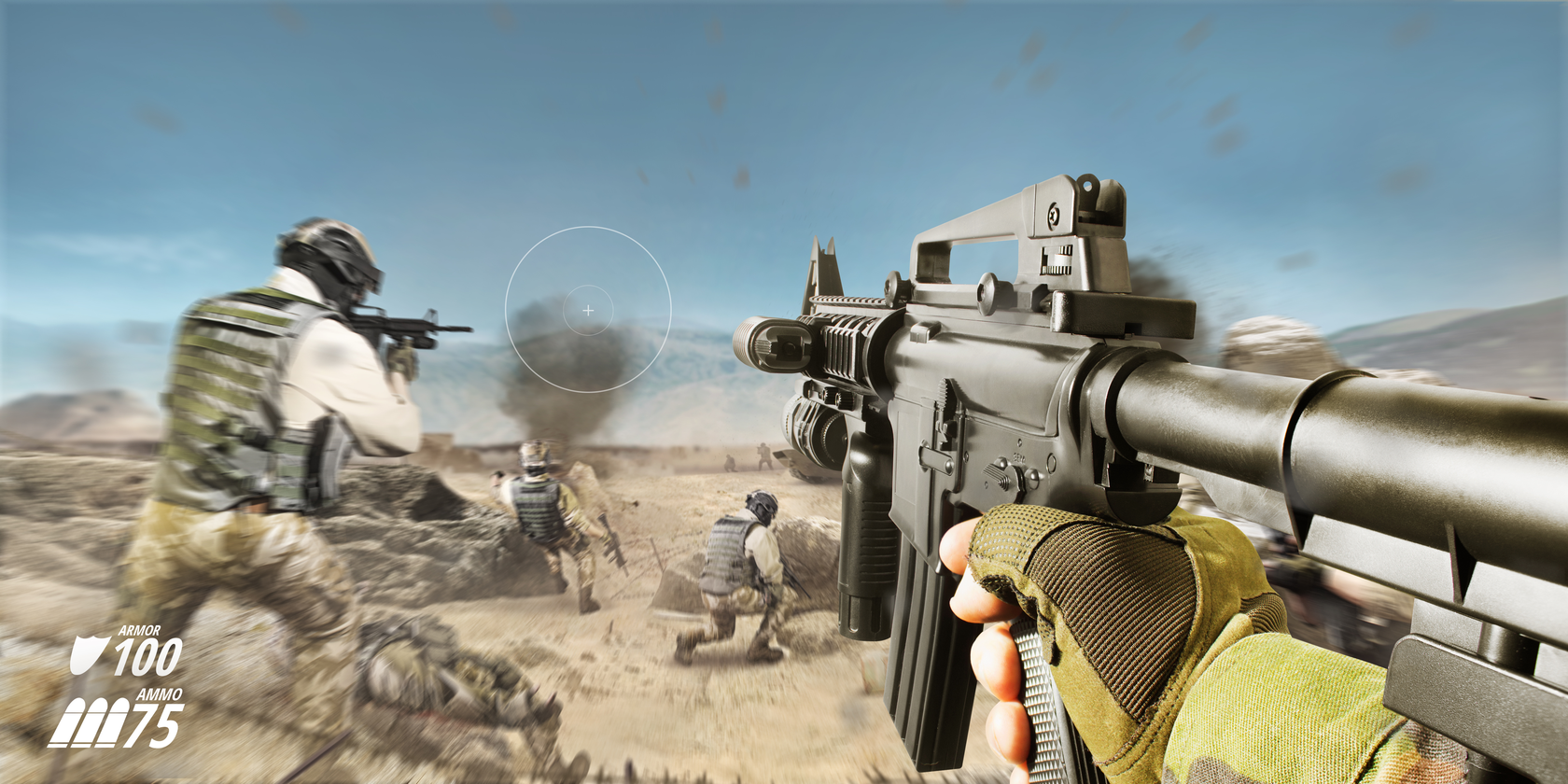All video games need to show the events of the game to the player in some way, and most do this with either a first-person or third-person camera view. And while the main differences between these styles are clear, there are a lot of nuances between how first-person and third-person games work.
Let’s examine the differences between first-person and third-person camera setups in video games, including how they affect the gameplay and common genres in each style.
What Are the Differences Between First-Person and Third-Person?
To start, let’s look at the basics of each visual style. Because video games can be vastly different, we’ll speak in general terms; these may not apply perfectly to every game.
Keep in mind that first-person and third-person views mainly apply to 3D games, as 2D games typically feature a static camera angle. While you could technically consider 2D games third-person, it’s not really the same as a third-person camera in 3D titles. See our comparison of 2D and 3D games for more details.
First-Person Games Explained
A first-person game is one where you play through the perspective of your character. As a first-person story tells the tale through “I” statements, a first-person game lets you see exactly what your character sees.
Because of this, there’s no “game camera” that you can manipulate to get a better view of the world around you. Your only option for looking around—say, to see what’s directly behind you—is to move your character’s entire view.
This affects how you interact with the game world in a lot of ways. For example, in a first-person game, if you want to know whether an enemy is hiding around a corner, you can’t check this without exposing yourself around that same corner.
In most first-person games, your character’s hands (as well as their weapon, if applicable) are almost always in your view. You can’t typically see much more of your character than this, though. As a result, most first-person games characterize their protagonist mostly through how other characters interact with them.
Third-Person Games Explained
Third-person, in comparison, refers to a game where you view your character as an onlooker instead of controlling the game from their view directly. Typically, you see your character from an over-the-shoulder or behind-the-back perspective. It’s akin to how a third-person story uses phrases like “he ran quickly.”
In third-person games, the camera follows behind the player character, allowing you to see more of what’s around them than a first-person game does. Referencing our earlier example, in a third-person game, you could swing the camera around a corner to see what lies behind it, all while keeping your character safe on the other side.
Because third-person views let you see your character all the time, these games can more easily show their personality. Seeing the way that a character walks, interacts with the environment, reacts to events, and even what they wear can help you learn more about them through visual clues.
Types of Third-Person Cameras
First-person games are fairly straightforward because they’re limited to the player avatar’s view. But third-person games have more opportunities for different kinds of camera systems.
The three most common types of third-person cameras are:
- Fixed Cameras: In this setup, the camera is set up in a certain position and the player can’t change it at all. It’s scripted so that every time you enter a certain area, the camera is in the exact same spot. The early Resident Evil games are a good example of this; they used fixed camera angles to create tension.
- Tracking Cameras: In this type of game, the camera follows the player as they move. You don’t have any control over it; the camera simply moves as you control your character. This is the case in the original Crash Bandicoot series, and while it works in linear levels like those games feature, it’s not flexible enough for open 3D environments.
- Interactive Cameras: By far the most common third-person camera type today, interactive cameras follow behind your character but allow you to control them. Usually, with a controller, you use an analog stick to do this, while on PC it’s controlled by the mouse.
Interactive cameras are the most common because they provide the most player control. However, they aren’t perfect. A poorly-made camera system can get stuck on objects in the world or otherwise make it difficult for you see what you’re trying to view.
Meanwhile, fixed cameras are typically only used these days in games going for a more cinematic feel, while tracking cameras are mostly outdated.
Examples of First-Person Genres
Let’s next look at a few common examples of game genres that use a first-person perspective. Bear in mind that some games allow you to switch between camera styles—for instance, you can change between first-person and third-person in the newer Fallout games at will.
First-Person Shooters
By far the most popular genre that uses a first-person view, first-person shooter (FPS) games give you a gun and task you with shooting your enemies. FPS titles can be action-oriented or more tactical, but they all put you in the shoes of your player and focus on weapon combat.
Examples include Call of Duty and Doom.
Driving Games
While most driving games are in third-person, many of them allow you to change the perspective to first-person as well. Depending on the game, this could place your view at the front of the car or inside the driver’s seat.
Examples include Driveclub and Forza.
Adventure Games
Some games built around exploring use a first-person perspective that’s similar to an FPS game, but doesn’t involve weapons. These are often first-person puzzle games that require you to solve logical or spatial challenges.
Examples include Minecraft and The Witness.
Examples of Third-Person Genres
Below are a few common video game genres that utilize a third-person view.
Third-Person Shooters
Shooters are a popular genre in the third-person perspective, too. Aiming can sometimes be more difficult than in FPS games, as your player’s avatar or other items in the world might block your view.
Examples include Gears of War and Uncharted.
Action-Adventure
Action-adventure titles combine fast-paced gameplay with world building and exploring. These are often in third-person, which is superior for melee combat and platforming compared to first-person.
Examples include The Legend of Zelda and Batman: Arkham Knight.
Sports Games
It would be pretty disorienting to play a sports title in first-person, so most sports games use a third-person perspective to let you see all the action.
Examples include Madden NFL and Rocket League.
Do Second-Person Video Games Exist?
With all this discussion about first and third-person games, you might wonder if second-person video games are possible. This would be equivalent to a story that uses wording like “you walk down the hall” (which isn’t very common).
While a video game could use a second-person narrative structure, a second-person camera system doesn’t make a lot of sense. The closest equivalent would involve you watching your character’s actions through the eyes of someone else.
Unsurprisingly, second-person camera systems in games are quite rare. There are some scattered examples, such as Siren on PS2 requiring you to play through the eyes of an enemy, but it’s not something you see very often.
If you’re interested in the idea of second-person games, we highly recommend you watch the below video. It covers how a mission in the game Driver: San Francisco illustrates what a second-person game could be like.
First-Person and Third-Person Games Defined
Now you know the differences between first-person and third-person viewpoints. These systems lend themselves well to certain genres and setups, so one isn’t inherently better than the other.
Try playing games in various genres to decide which you prefer!
Image Credit: breakermaximus/Shutterstock
About The Author

